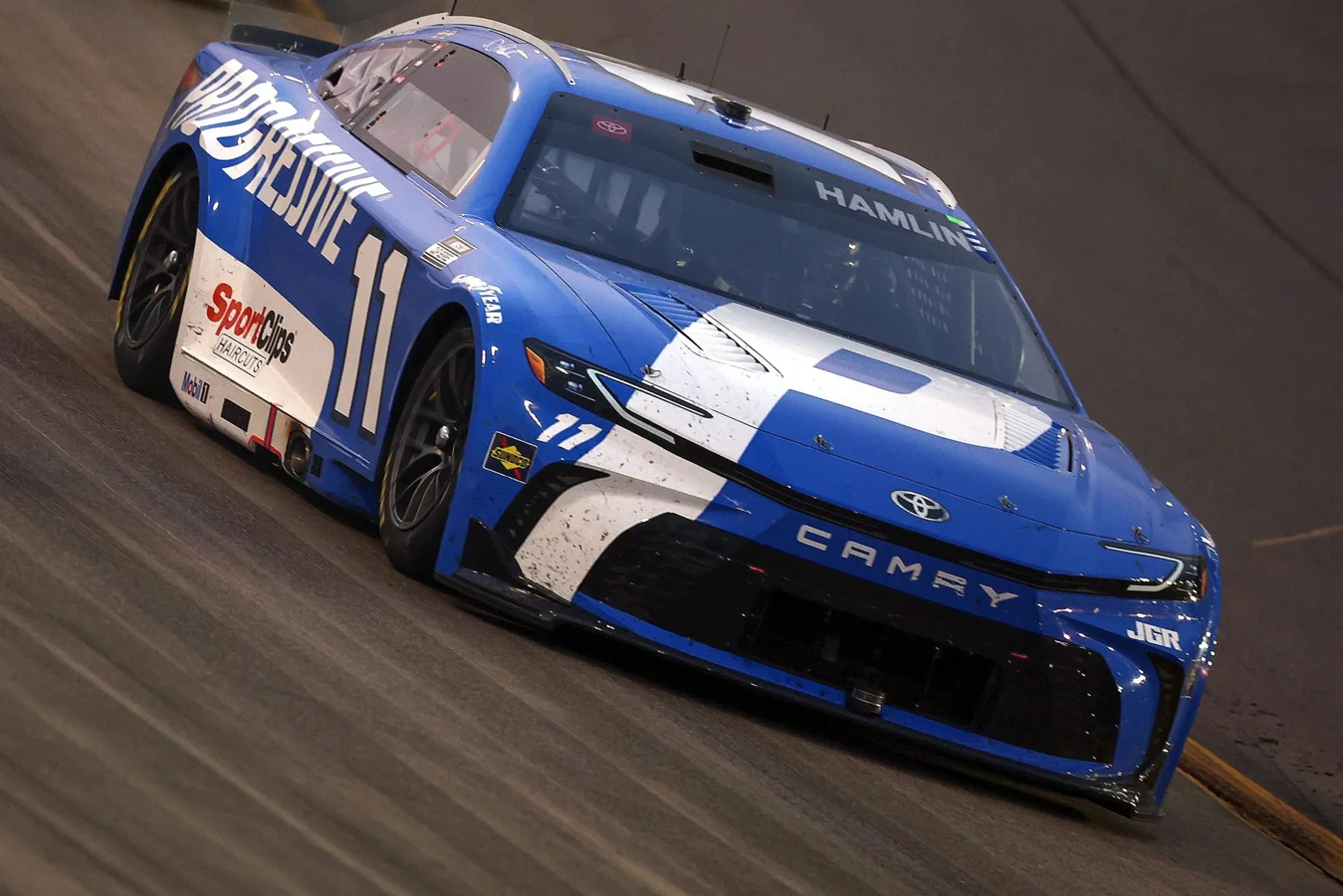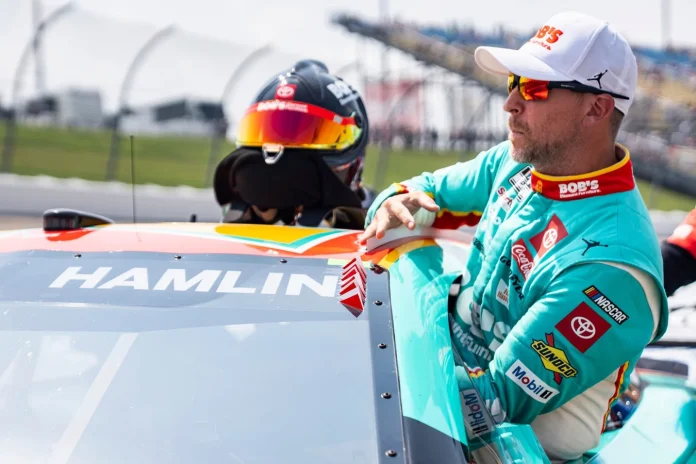Denny Hamlin’s criticism of NASCAR NextGen has intensified, as he stands up for frustrated fans and takes aim at the sport’s leadership. The NASCAR Cup Series veteran argues that concerns over the NextGen car are thoroughly justified, with issues impacting both drivers and the people who watch every weekend.
Mixed Reactions to the NextGen Revolution
The introduction of NASCAR’s NextGen car stirred deep division across the racing community. Supporters, including well-known analysts such as Kenny Wallace, praised the bold design changes and technological advancements as a leap forward for the sport. The intent was to equalize manufacturer competition and deliver a dazzling on-track spectacle for audiences. At the 2021 unveiling, 2020 series champion Chase Elliott captured the early optimism that surrounded the project, stating,
“After so long talking about it and working on it, it’s a little surreal to see it actually sitting there, isn’t it? This is a racy-looking car. Now let’s hope it races as good as it looks,”
—Chase Elliott, 2020 NASCAR Cup Series Champion
Despite this initial excitement, reality has not met expectation. Over the past several seasons, the promise of more competitive and entertaining racing has dimmed. Both drivers and fans have voiced concern, noting that the NextGen car’s on-track product often falls short of the action and passing that defined previous NASCAR eras.
Hamlin’s Stand: Fans’ Complaints Are Not Unreasonable
Denny Hamlin has emerged as one of the most outspoken critics regarding the NextGen platform, consistently arguing that fans’ dissatisfaction is neither baseless nor exaggerated. Rather, he believes these frustrations simply mirror the realities faced by drivers. In an interview reflecting on the Iowa race, Hamlin underscored how the current car architecture inhibits genuine competition, especially at the front of the field:

“You can make passes if you’re in the middle of the pack when everyone has disturbed air. It’s just challenging the leader in this car, is such a tough ask, because the leader has such an advantage,”
—Denny Hamlin, Veteran NASCAR Driver
Hamlin’s comments point to a fundamental flaw: the difficulty of passing, especially for those vying for the lead. Many drivers have echoed these points after races, and the fan base has become increasingly vocal about these on-track struggles, which they see as diminishing the excitement and unpredictability of NASCAR’s highest level.
Data Supports Passing Woes in the NextGen Era
Behind the wheel, Hamlin has backed his criticism with numbers. He described how the narrow speed gap between the fastest and slowest cars on the grid creates an almost insurmountable challenge for overtaking—particularly when compared to previous generations of the race car.
“If you look at the times, the difference between the first place, the fastest race car on the racetrack, and the 30th place speed car is 3.10. We talked about at Indy where you had to be 1.2 seconds faster than someone to actually overtake them,”
—Denny Hamlin, Veteran NASCAR Driver
“The number at Iowa, I don’t know, I think it probably is at least 3.10. So, that’s why you saw when the leader catches the 30th place car, he can’t, it just takes him forever to work them over because there’s not enough difference in speed from that car to that car.”
With so little separation between cars, Hamlin argues that the racing action has become stale. Track position, often determined by pit strategy or qualifying, now means more than direct, on-track competition. Fans hoping for daring overtakes and late-race duels have found themselves let down by the processional nature of many main events.
Questionable Tire Strategies Compound Problems
Hamlin did not restrict his critique to car design. He openly questioned NASCAR’s and Goodyear’s tire choices at Iowa, especially following a recent tire test. In his view, the selection of a tire compound with virtually no degradation eradicates yet another variable essential to authentic racing drama. Sharing his reaction to this issue, Hamlin told Dale Earnhardt Jr.,
“And then when you look at the course of the run, I sent Dale Jr. a screenshot of this on Saturday night, I said, ‘Can you believe that we tire tested here?’ Not we, the 11 car, but NASCAR and Goodyear tire tested here, and this is the tire that they came up with, is the one that zero fall-off after 50 laps,”
—Denny Hamlin, Veteran NASCAR Driver
“How on the world do you expect us to put on a good race when everyone’s going to run the same speed, and they’re gonna run the same speed from the beginning of the run to the end of the run?”
The lack of tire fall-off means that drivers rarely face the challenge of managing tire wear across a run, which can create unpredictable results, promote varied strategies, and reward those who adapt best to changing conditions. By removing that dynamic, races become more uniform and finished positions are settled earlier in the event, further fueling fan complaints.
Hamlin Defends Fans Against Criticism
Recently, a narrative has developed framing vocal NASCAR fans as simply negative or unrealistic. Hamlin pushed back against this view, defending those who question the direction of both the car and the sport itself. He asserted,
“I think that some of the fans are really getting labeled as just people that are negative all the time by the NASCAR shields, and that’s just not true. They’re regurgitating what we are saying, and it’s just incredibly difficult out there,”
—Denny Hamlin, Veteran NASCAR Driver
This statement reveals a sense of solidarity between drivers and the loyal fanbase. According to Hamlin, when competitors themselves are grappling with the NextGen car’s inherent flaws, the critical voices from the stands and online platforms become a necessary reflection of deeper issues rather than simple naysaying.
What Comes Next for NASCAR and Its Stakeholders?
Hamlin’s forthright statements revitalized the debate around NASCAR’s current direction and its commitment to competitive racing. As the league, tire suppliers like Goodyear, and the community of drivers and analysts grapple with these challenges, the disconnect between expectation and reality has become impossible to ignore. If key figures like Denny Hamlin and Chase Elliott continue publicly airing dissatisfaction, pressure may mount for manufacturers and officials to revisit the NextGen formula or adjust strategy such as tire compound selection. How NASCAR responds in future seasons will likely decide whether fan frustration evolves into broader disengagement or renewed hope in the sport’s modern era.


